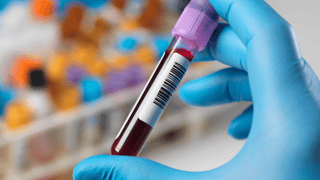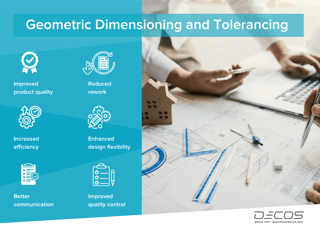Nearly everything you see around you is designed; that is, it is present because someone thought about what was required. I see a mobile phone, a headphone, a desk, a chair, a pen a computer in front of me, the clothes I am wearing, etc., these are the obvious objects of design. A dictionary search will reveal that "design" is both a verb and a noun. Its verb form denotes planning, devising, intending, and drawing. A drawing, an item, a plan, or a scheme are all considered nouns by this term. Design thinking is closely connected to the concept of design as both a verb and a noun. While design as a noun refers to the tangible objects, plans, or schemes that have been created, design thinking represents the mindset and approach used to generate those designs. Design thinking originated in the field of design but has gained significant traction across various industries and disciplines. It is not limited to the traditional notion of design in terms of aesthetics or visual appearance. It encompasses a broader perspective that considers the entire process of problem-solving and innovation.
Design thinking is a problem-solving approach and a mindset that prioritizes human-centered solutions. It is a creative and iterative process used to tackle complex problems and develop innovative solutions. It focuses on understanding and addressing human needs, desires, and challenges in a holistic way.
In recent years, design thinking has been used to address a variety of healthcare challenges, including improving the patient experience, efficiency and cost savings, and innovation. It is a valuable tool for healthcare organizations because it can help them better understand the needs of their patients and develop innovative solutions to improve care. It encourages multidisciplinary collaboration and incorporates iterative prototyping and testing to refine, and improve designs and explore a wide range of ideas before converging on the best solutions.
Why design thinking process?
When starting a design thinking project, there might be a lot of initial confusion and ambiguity about where the project is heading, and sometimes this isn't very enjoyable. But this clears up as you gather more information, analyse research, create concepts, prototype, and test ideas, and then iterate and improve those ideas into tangible solutions. The general stages of a design thinking project involve "diverging" and "converging" - open to new ideas, investigating possibilities, and testing -- and then coming together around a final solution or design.
Stages of a design thinking process
The design thinking process typically consists of several stages, which may vary depending on the specific framework or methodology used. However, the fundamental principles remain consistent and often include:
Empathize: Designers immerse themselves in the users' environment, observing and engaging with them to understand their needs, motivations, and pain points. This step involves conducting interviews, surveys, and other research methods to gather insights.
Define: Based on the information gathered during the empathize stage, designers define the core problem they aim to solve. They distill the research findings and identify the underlying needs and challenges that need to be addressed.
Ideate: In this stage, designers generate a wide range of ideas and potential solutions. Brainstorming sessions, sketching, and other creative techniques are employed to encourage divergent thinking and foster innovative concepts.
Prototype: Designers create tangible representations of their ideas to bring them to life. Prototypes can range from simple sketches or mockups to interactive models or functional prototypes. The purpose is to test and iterate on the concepts.
Test: The prototypes are tested with users to gather feedback and evaluate their effectiveness. The focus is on understanding how well the solutions meet the users' needs and identifying areas for improvement.
Iterate: Based on the feedback and insights gathered during testing, designers refine their solutions and go through multiple iterations of prototyping, testing, and refinement. This iterative process allows for continuous improvement and ensures the final solution is well-suited to the users' needs.
A case study for design thinking
Let's walk through a case study applying the design thinking approach to the development of asthma inhalers.
Step 1: Empathize
In the empathize stage, the design team would engage with asthma patients, caregivers, and healthcare professionals to understand their experiences, challenges, and needs related to asthma inhalers. They would conduct reviews, observations, and surveys to gather insights. They might discover issues such as difficulty in using inhalers, confusion about dosage, concerns about portability, or the stigma associated with using inhalers.
Step 2: Define
Based on the insights gained from the empathy stage, the design team would define the core problem they aim to address. For example, they might identify the need for an asthma inhaler that is easy to use, portable, and discreet, ensuring accurate dosage administration and addressing user concerns and preferences.
Step 3: Ideate
During the ideation stage, the design team would generate a range of ideas for innovative asthma inhaler solutions. They would encourage brainstorming sessions, sketching, and collaboration to foster creativity. Ideas could include inhalers with simplified mechanisms, smart inhalers with sensors to track medication usage and provide reminders, or inhalers designed to resemble everyday objects to reduce stigma.
Step 4: Prototype
In the prototyping stage, the design team would create physical or digital prototypes of the selected ideas. For example, they might develop 3D-printed models, interactive digital simulations, or functional prototypes with simplified mechanisms. These prototypes would allow them to visualize and test their ideas in a tangible form.
Step 5: Testing
The prototypes are then tested with the intended users, including asthma patients and healthcare professionals. The focus is on gathering feedback, evaluating usability, and identifying potential areas for improvement. Users' experiences, preferences, and suggestions are carefully considered and incorporated into the design.
This design thinking approach ensures that the asthma inhaler solution is developed with a deep understanding of the users' perspectives, resulting in an innovative, user-centric product that is both functional and desirable. Through iterations of prototyping and testing, the design team refines the asthma inhaler solution, making adjustments and enhancements based on user feedback. The process continues until a final design is achieved that effectively addresses the needs and challenges identified in the empathize stage.
Design thinking encourages a collaborative and multidisciplinary approach, bringing together individuals with diverse perspectives and skills to foster innovation. It promotes a bias towards action, experimentation, and learning from failure. By emphasizing user-centeredness and iteration, design thinking helps to create solutions that are not only functional but also meaningful and impactful.
How Decos implements design thinking
We closely collaborate with our clients to identify their unique challenges and needs, encouraging a human-centered approach to problem-solving. By employing empathy, ideation, prototyping, and testing, we help our clients generate innovative solutions that align with their end-user preferences and expectations. We work closely with our clients throughout the development process, ensuring that user feedback and iteration play a central role in delivering successful products or services.

.png?width=1280&height=720&name=MicrosoftTeams-image%20(12).png)





